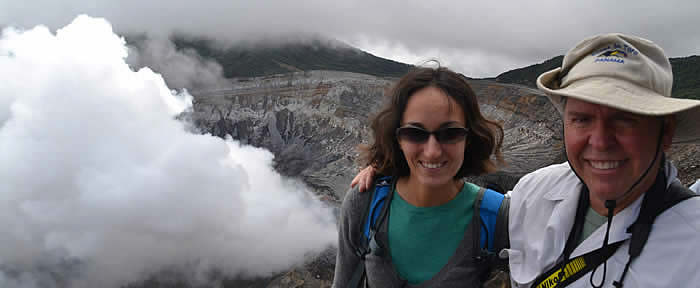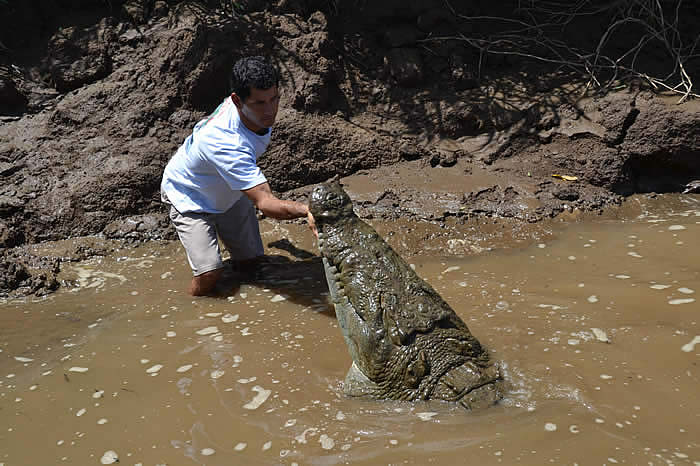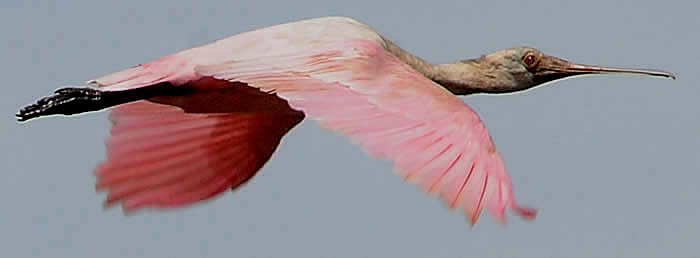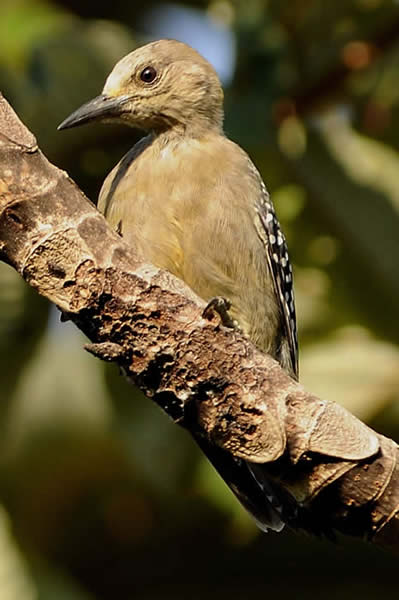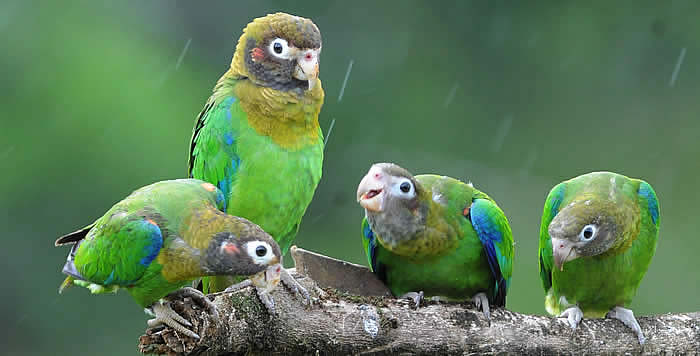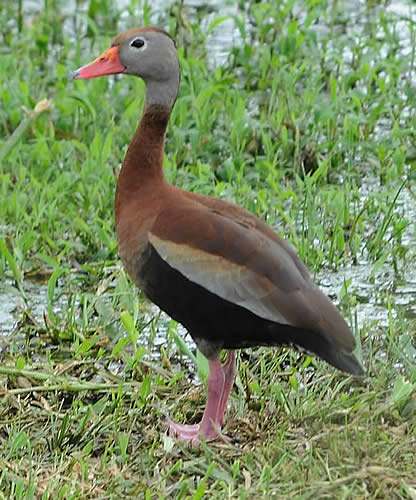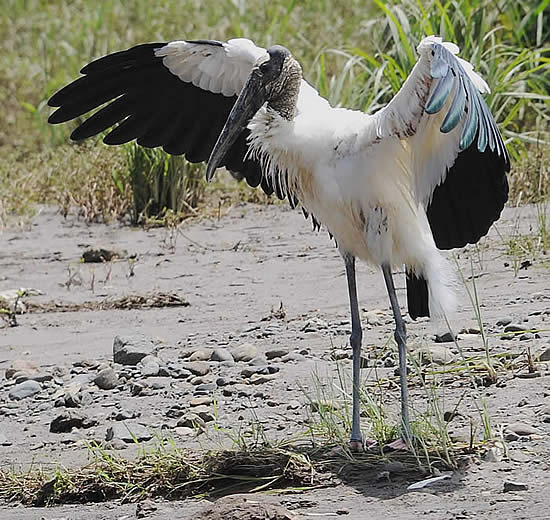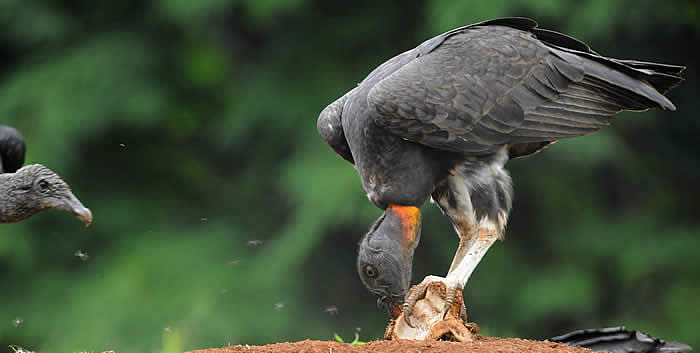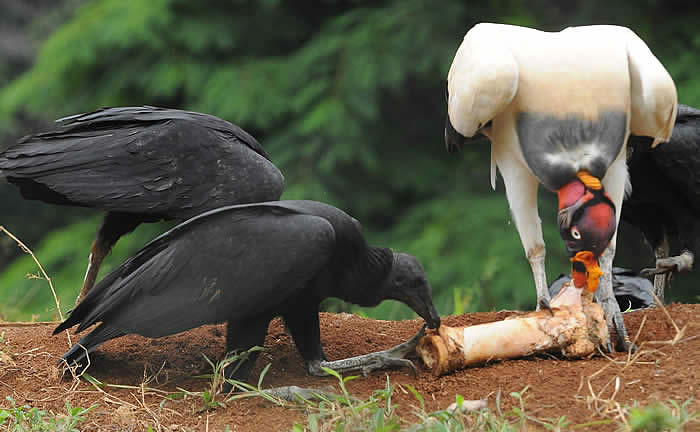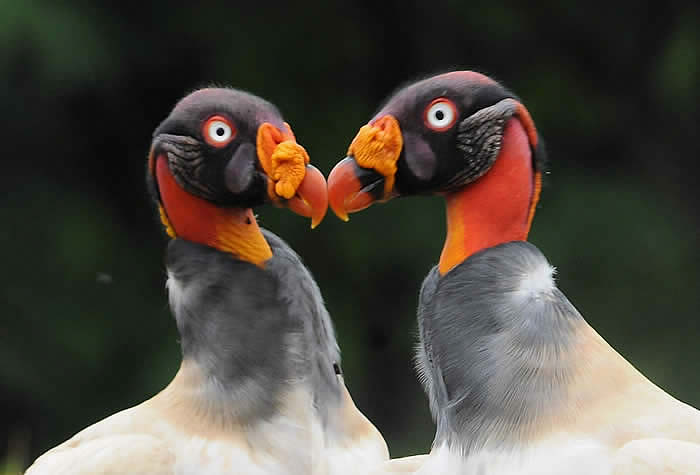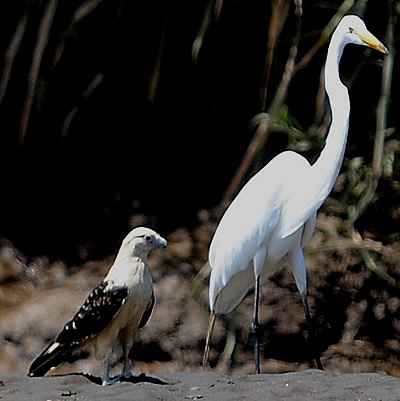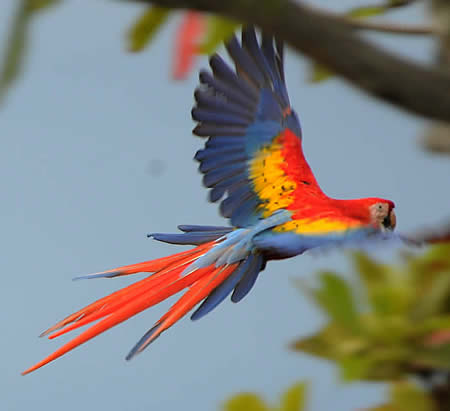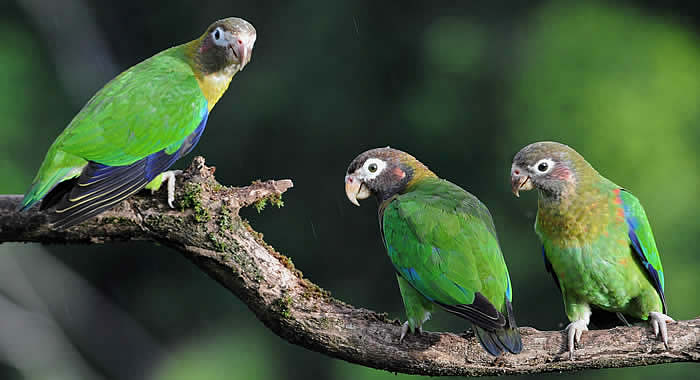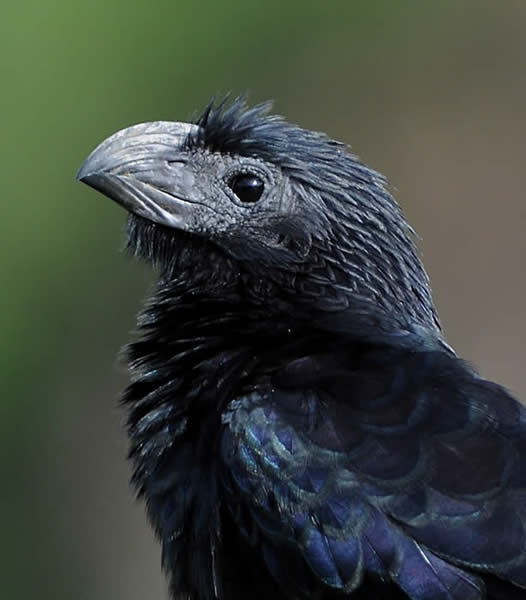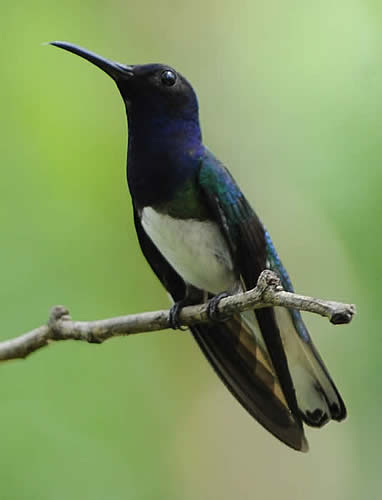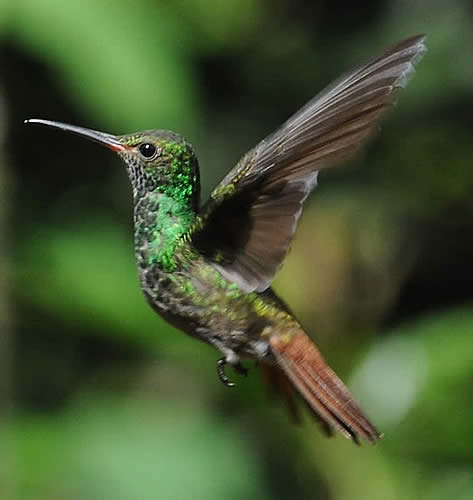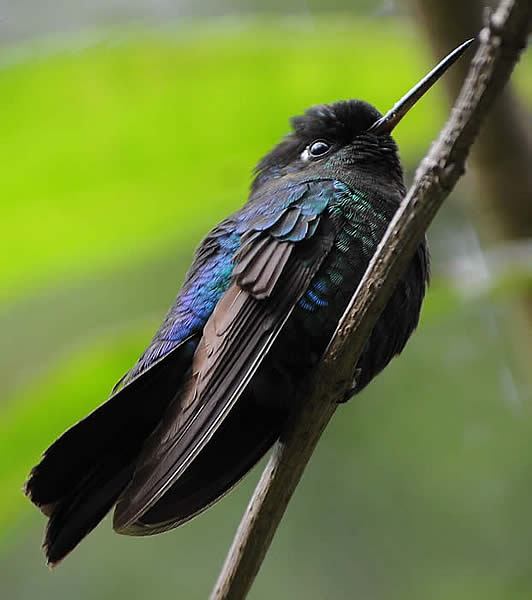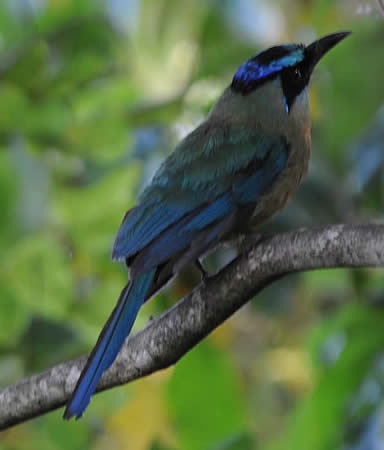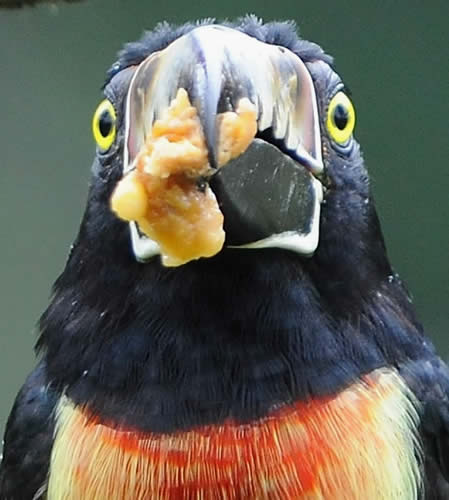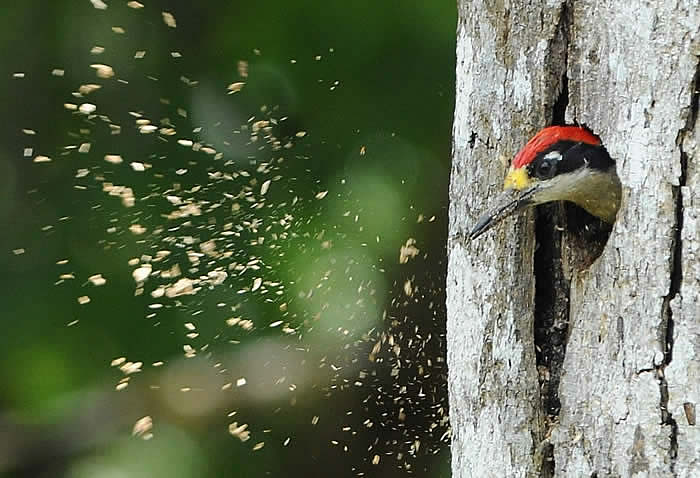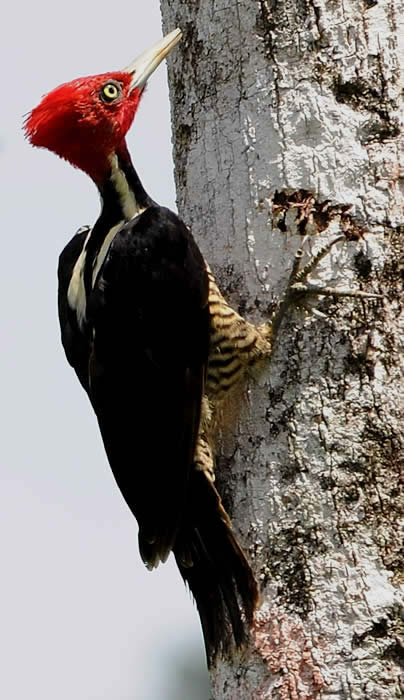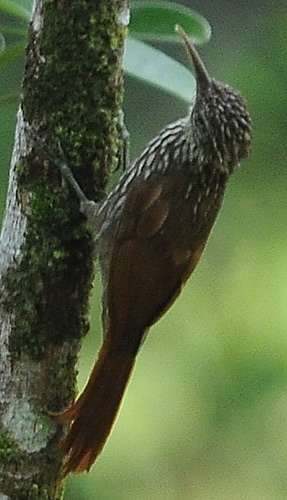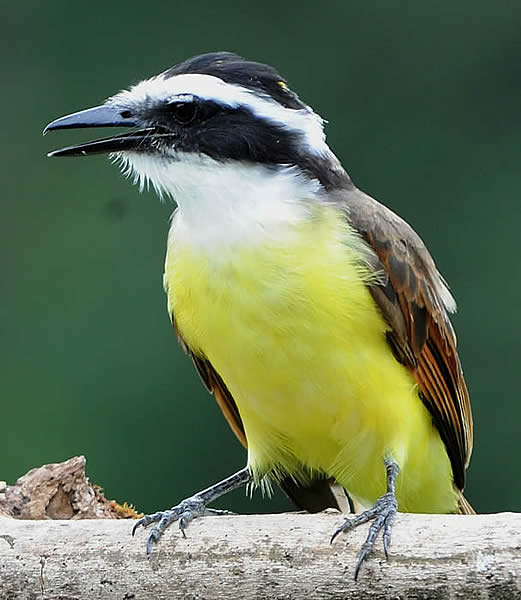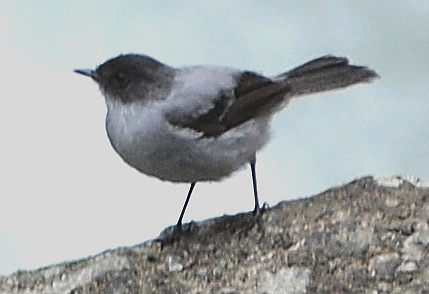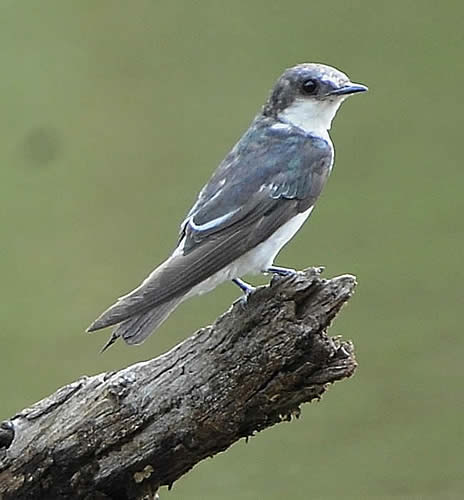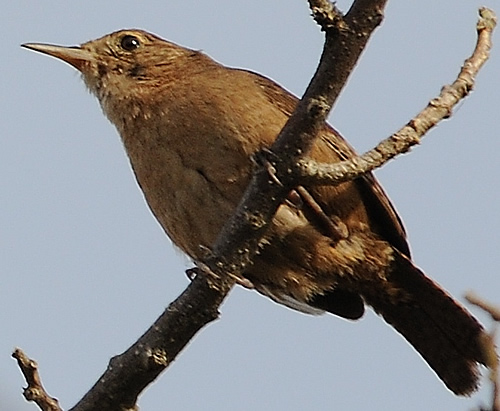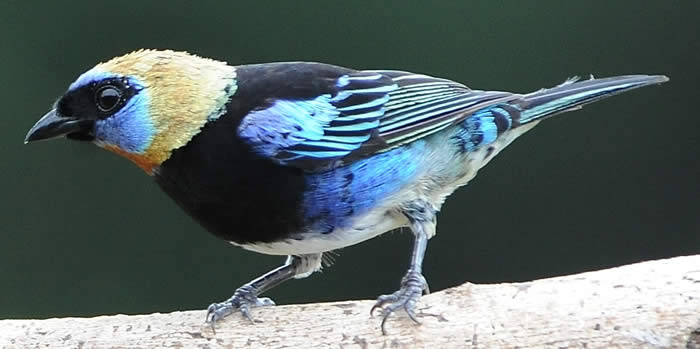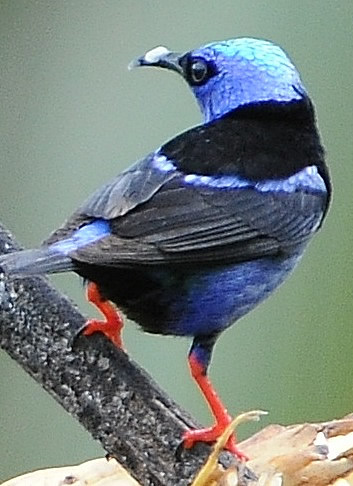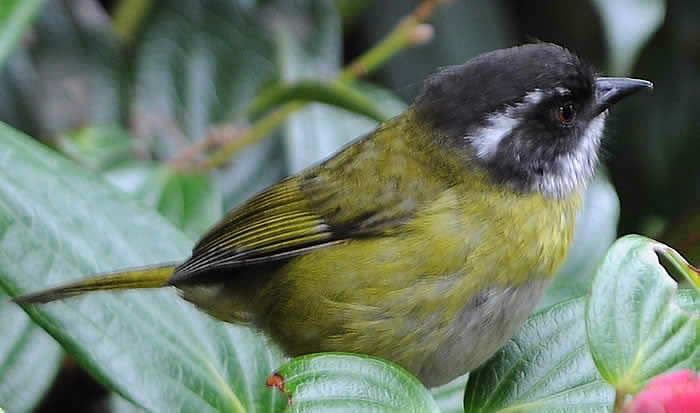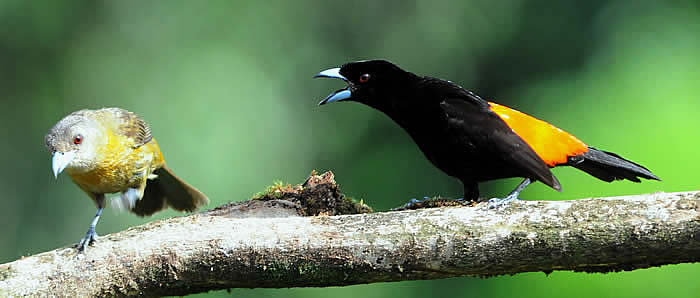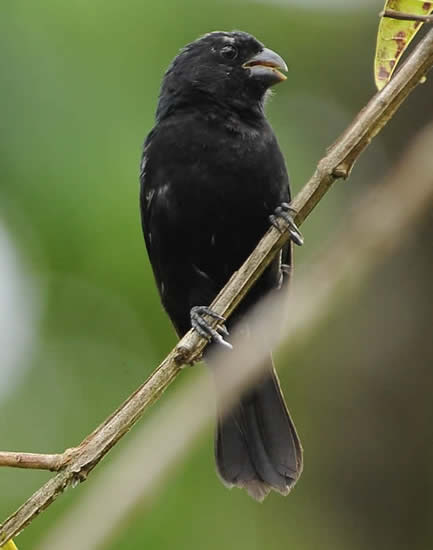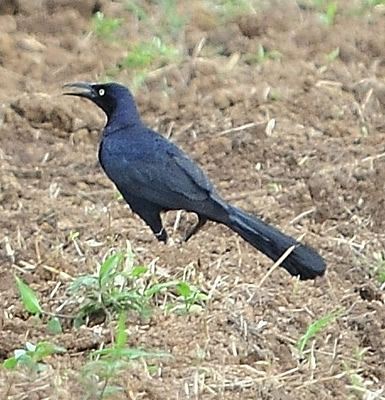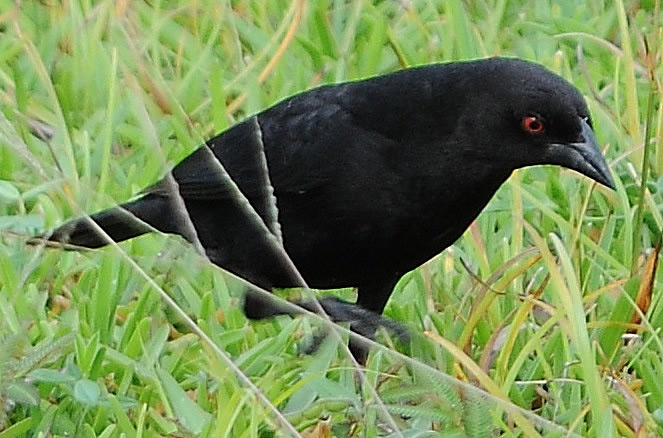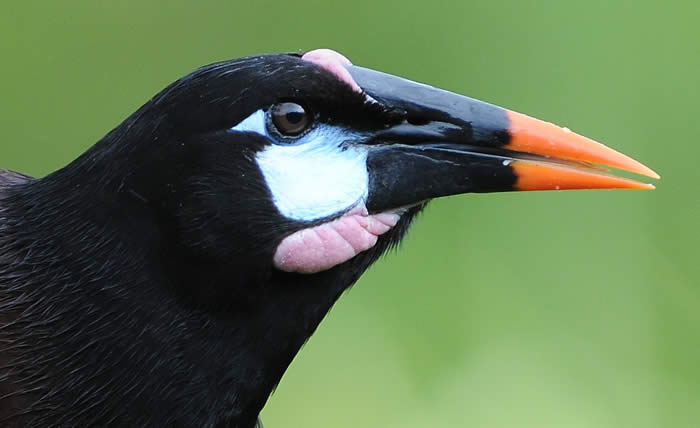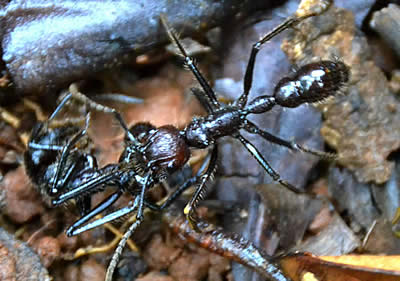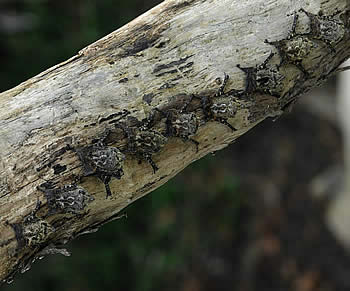COSTA RICA TROPICAL BIOLOGY SCOUTING TRIP REPORTS © 2011 Callyn Yorke
Previous Trip Reports
Central Highlands, Volcan Poas, Rio Tarcoles, Punta Leona, Boca Tapada
(June 15-30, 2011) © 2011 Callyn Yorke
Species Lists
Summary
This trip to Costa Rica in the latter half of June, 2011 gave us an opportunity to re-survey the Boca Tapada area (i.e. Laguna Del Lagarto) at the beginning of the rainy season. Additionally, we included a four-day survey of the Santa Barbara foothills overlooking the capital city of San Jose, together with separate one-day visits to Volcan Poas National Park and the Tarcoles River coastal area. The latter two locations I had not visited since 1999 when with my Tropical Biology class from AVC. Not surprisingly, our trip list of birds (118 species) and other animals was significantly enhanced by the addition of species associated with the interior highlands and Pacific coast.
Highlights of the trip included Volcan Poas National Park (Elevation 8,500 ft.), where a steaming caldera (inactive during our previous visit of 1999) was the centerpiece of our trek through the cloud forest. Birds found and photographed along the well-maintained trails included montane specialties such as Magnificent Hummingbird, Black-billed Nightingale Thrush, Sooty-capped Bush Tanager and Large-footed finch.
Volcan Poas, June 19, 2011.
Sooty-capped Bush Tanager (Chlorospingus pileatus) in Volcan Poas National Park June 19, 2011.
© 2011 Callyn Yorke
A boat trip on the lower Rio Tarcoles produced several bird species not found elsewhere during our visit, including Roseate Spoonbill, Woodstork, White Ibis, Yellow-crowned Night Heron, and perhaps least expected, Yellow-headed Caracara. Although the boat trip had been designed primarily for tourists, the captain was a keen naturalist and usually pointed out wildlife of interest (e.g. Two-toed Sloth and American Crocodile. At one point during the cruise, he got out of the boat to hand-feed a huge ( 18 ft. ) crocodyle named "Tornado." Reportedly, our boat captain is the only person who continues to do this insanely dangerous stunt for tourists; several other tour leaders have apparently resigned as a result of serious injuries suffered while hand-feeding large crocs (I think their names were "Lefty" Gonzalez and his brother "Speedy").
American Crocodile (Crocodilus acutus) Rio Tarcoles June 18, 2011.
© 2011 Callyn Yorke
Roseate Spoonbill (Ajaia ajaja) Rio Tarcoles June 18, 2011.
© 2011 Callyn Yorke
The foothills overlooking San Jose near Santa Barbara, Heredia (Elevation 4,360 ft.) also supported bird species we did not find elsewhere during our visit. These were, Tropical Screech Owl, Black Swift, Beryl-crowned Hummingbird, Long-billed Starthroat, Hoffman's Woodpecker, Lineated Woodpecker, Torrent Tyrrannulet (La Paz Waterfall), Brown Jay, Blue and White Swallow, Ochraceous Wren, Yellow-green Vireo, Bronzed Cowbird, and Grayish Saltator.
Hoffmann's Woodpecker (Melanerpes hoffmannii) Santa Barbara, Heredia, June 20, 2011
© 2011 Callyn Yorke
Our primary focal point for the visit was Laguna Del Lagarto lodge (LDL), located a few miles north of Boca Tapada adjacent to the Rio San Carlos in northeastern Costa Rica (see map from the April 2011 report). We spent 9 days there surveying primary and secondary lowland rainforest for birds and other animals. We included surveys of adjacent pastureland, riverine forest, lagoons, and a small section of the Rio San Carlos adjacent to Makenke, the relatively new ecolodge near Boca Tapada. Most of the birds we found during our April, 2011 survey (see previous report) were found again. However, additional species were noted, including Black-bellied Whistling Duck, White-tipped Dove, Scaled Pigeon, Striped Cuckoo, Green-breasted Mango, Yellow-bellied Elaenia and most surprisingly, Chestnut-headed Oropendola (new for the LDL bird list). Some bird species seemed scarce during this visit, including Keel-billed Toucan and Chestnut-mandibled Toucan; both of these birds were quite common and conspicuous during our visit in April. Several bird species were engaged in nesting and/or feeding young during our present survey. These were: Brown-hooded Parrot, Black-cheeked Woodpecker, Collared Aracari and Clay-colored Robin. A major attraction of LDL was the appearance of the wonderfully hideous and generally scarce King Vulture (five adults and one immature) at a bait station next to the bird observation bunker built by wildlife photographer Bence Máté. As a result of the close proximity and eye-level orientation of the hide, we obtained excellent views of behavioral interactions among free-ranging King Vultures, Black Vultures (numerous) and Turkey Vultures (2 or 3) feeding on pieces of meat and bone placed there the prior evening (photos). From these observations we learned that a relatively small amount of beef attached to bone fragments was sufficient to immediately attract these birds and keep them at the site for several hours.
Black Vulture(Coragyps atratus) and King Vulture (Sarcoramphus papa) at LDL bait station June 25, 2011.
© 2011 Callyn Yorke
Although our visit was during what generally is called "rainy season" in Costa Rica (roughly June - November), we were seldom inconvenienced by wet weather. This may have been due to annual climatic variation or symptomatic of global climate changes. No one is really sure. During our visit mornings in the lowlands were often overcast, while afternoons and evenings produced light to moderate rainfall. Occasional thunder storms with heavy rainfall occurred at LDL, largely between sunset and sunrise (a forceful tornado hit the LDL area briefly during this time last year, snapping mature trees like match-sticks and causing significant tree-fall in isolated patches of the nearby forest). In the lowlands, partial clearings during the day resulted in uncomfortably high temperature and humidity, approaching 90F and 90%, respectively. Subsequently, breezes from the northeastern tradewinds tended to reduce afternoon temperatures to a more comfortable range of 70 - 80F. Highland temperatures were cooler overall; early morning and late evening air temperatures dropping into the low 50F range. These temperatures could be lowered a few degrees further by afternoon low fog and wind. As is often observed in the tropics, bird activity increased after rains. This was especially apparent on clear mornings following lengthy overnight rainstorms.
Brown-hooded Parrot ( Pionopsitta haematotis) LDL June 23, 2011
© 2011 Callyn Yorke
BIRDS NOTED (June 15-30, 2011)
(Reference: Stiles, F.G and A. F Skutch. 1989. A Guide to the Birds of Costa Rica. Cornell Univ. Press. 511 pp.)
Observers: Didier Castro (DC); Merissa Mendez (MM); Callyn Yorke (CY).
Equipment: B&L 10x42 binocular; Nikon D3x with 80-400mm AF VR lens; Nikon D3100 with 18-200mm AF VR lens.
Key to Locations
BC = Boca Tapada, Alajuela. Pastureland, farmland, primary and secondary lowland rainforest; riverine forest. 6/20-29.
CE = A. Coffin Estate, Santa Barbara, Heredia. About 2 hectares of lawns, ornamental shrubs and trees @ 4,360 ft. 6/15 -20.
LDL = Laguna Del Lagarto, Alajuela . 700 hectares of lowland primary and secondary rainforest, lagoons, pastureland @ 300 ft. 6/15-29.
LW = Lapaz waterfall near Volcan Poas, Heredia @ 5,200 ft. 6/19.
ML = Makenke Lodge, Boca Tapada. About 60 hectares of lowland primary and secondary rainforest, riverine forest, lagoons and gardens. 6/28.
PL = Punta Leona, Alajuela/south of Tarcoles. About 100 hectares of lawns, gardens, lowland primary and secondary forest; beaches.
RT = Rio Tarcoles, Alajuela. About 2 miles along the river, including the HWY 34 overpass including pastureland, secondary riverine forest. 6/18.
SR = Santa Rita village: a small village and lagoon near LDL.
VP = Volcan Poas National Park. Trails around the main caldera through primary cloud forest. 6/19.
Great Tinamou Tinamus major 2 calls early AM and late evening, LDL.
Black-bellied Whistling Duck Dendrocygna autumnalis 6 staying together on shore of lagoon, ML.
© 2011 Callyn Yorke
Brown Pelican Pelecanus occidentalis 5 on offshore rocks, RT.
Olivaceous Cormorant Phalacrocorax olivaceous 1 on offshore rocks, RT; 1 in lagoon, LDL.
Anhinga Anhinga anhinga 2 resting on snag in lagoon, LDL.
Magnificent Frigatebird Fregata magnificens 8 soaring over beach, RT.
Bare-throated Tiger Heron Tigrisoma mexicanum 1 edge of lagoon, ML (DC).
Great Blue Heron Ardea herodias 3 separated by 200-300 m on shore, RT.
Great Egret Casmerodius albus 2 on shore; with YHCA scavenging meat scraps thrown to crocs, RT (photo).
Cattle Egret Bubulcus ibis 12 on shore and in pastures, RT.
Green-backed Heron Butorides striatus 1 in mangroves, RT; in lagoon, ML.
Agami Heron Agamia agami 1 in jungle overhanging shore of lagoon, LDL.
Yellow-crowned Night Heron Nyctanassa violacea 1 (imm) on a log in tall grass on island, RT (photo).
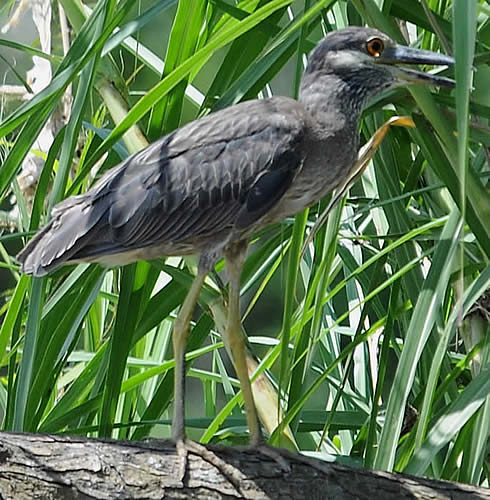
© 2011 Callyn Yorke
Green Ibis Messenbrinibis cayennensis 1 flushed from log perch in second lagoon, LDL.
Wood Stork Mycteria americana 6 foraging on shore; resting with open wings, RT (photo).
© 2011 Callyn Yorke
White Ibis Eudocimus albus 1 on shore, RT.
Roseate Spoonbill Ajaia ajaja 8 foraging on shore, RT (photo).
© 2011 Callyn Yorke
Black Vulture Coragyps atratus ubiquitous, abundant in and around of towns; patureland, rivers; readily attracted to garbage.
Turkey Vulture Cathartes aura ubiquitous, though locally uncommon; usually outnumbered by BLVU 10:1 in similar habitats.
King Vulture Sarcoramphus papa 6 (5 adults, one juvenile). feeding at bait station; interspecific agression; holds food with talons; shaves and tears meat off bone with bill; wary and shy; usually the first species to take flight when humans approach. Greatly outnumbered by BLVU at LDL and elsewhere in the region (photos).
BLVU and imm KIVU LDL June 25, 2011
© 2011 Callyn Yorke

© 2011 Callyn Yorke
BLVU and adult KIVU LDL June 25, 2011
© 2011 Callyn Yorke
Adult KIVU pair LDL June 25, 2011
© 2011 Callyn Yorke
Double-toothed Kite Harpagus bidentatus 1 in outer canopy of emergent tree, LDL.
Yellow-headed Caracara Milvago chimachima 1 with GREG, attracted to meat scraps thrown to crocs on shore, RT (photo).
© 2011 Callyn Yorke
Great Curassow Crax rubra 2 early morning calls ( a loud barking sound) from trees above our room, LDL (unseen).
Purple Gallinule Porphyrula martinica 3 edge of lagoon, ML.
Northern Jacana Jacana spinosa 1 lagoon, SR; 1 at edge of lagoon, ML.
Whimbrel Numenius phaeopus 1 on shore, RT.
Scaled Pigeon Columba speciosa 2 feeding on small fruits in a tall tree at edge of the garden, LDL (photo).
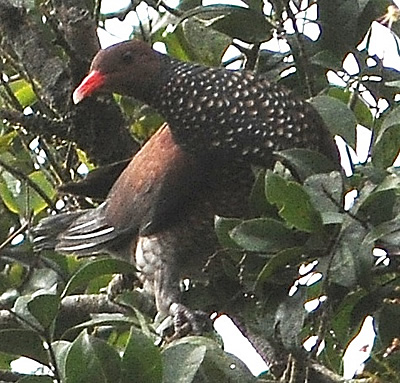
© 2011 Callyn Yorke
Red-billed Pigeon Columba flavirostris 2 CE; 2 LDL.
Short-billed Pigeon Columba nigrirostris 2 ML (photo).
© 2011 Callyn Yorke
Ruddy Ground Dove Columbina talpacoti 4 roadside pastures, BC.
Inca Dove Columbina inca 3 on lawn at roadside restaurant, RT (photo).
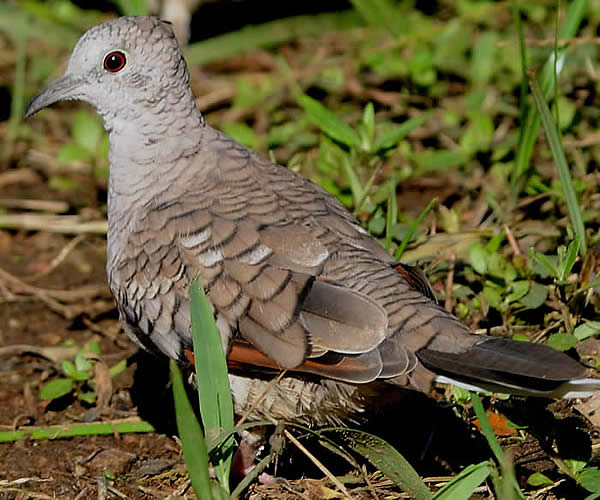
© 2011 Callyn Yorke
White-tipped Dove Leptotila verreauxi 3 seen for several days on lawn in garden, LDL.
Rock Dove Columba livia common in and around towns everywhere.
Scarlet Macaw Ara macao 4 feeding in fruiting trees (almond?) at beach PL (photo); 4 pairs vocal, flying over rainforest and clearings LDL, ML
© 2011 Callyn Yorke
Orange-chinned Parakeet Brotogeris jugularis 2 in leafless tree at the edge of the river, ML.
Brown-hooded Parrot Pionopsitta haematotis 11 (ad, imm) coming to banana feeder daily; adults feeding young, LDL(photo).
© 2011 Callyn Yorke
White-crowned Parrot Pionus senilis 4 in canopy of tall trees in the garden; not seen at feeders, LDL.
Red-lored Parrot Amazona autumnalis 6 highly vocal and active in canopy of flowering and fruiting trees around LDL (not seen at the feeders) (photo).

© 2011 Callyn Yorke
Mealy Parrot Amazona farinosa 2 vocal, flying over clearings in the forest; once visiting fruiting tree in garden, LDL; not seen at feeders (phhoto).
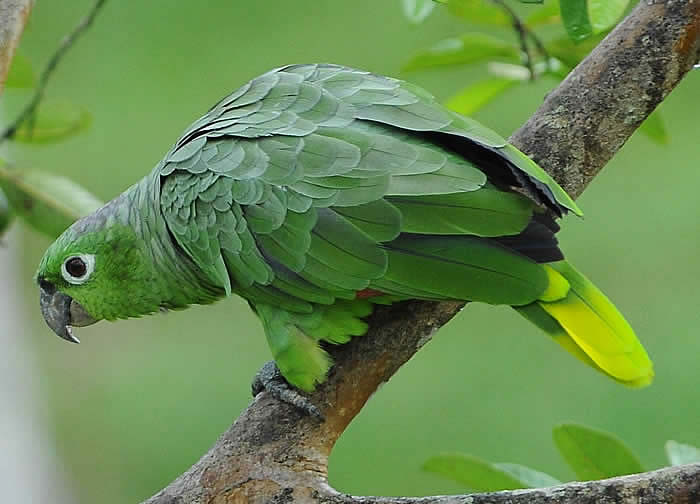
© 2011 Callyn Yorke
Striped Cuckoo Tapera naevia 2 calling from pastureland tree fences, BC.
Groove-billed Ani Crotophaga sulcirostris ubiquitous in clearings, pastures and disturbed habitats throughout the region (photo, CE).
© 2011 Callyn Yorke
Tropical Screech Owl Otus choliba 1 roosting during the day in a small, unoccupied, open-door aviary in the garden, CE
Black and White Owl Ciccaba nigrolineata 1 spotlighted while calling in the subcanopy of large trees in the garden, LDL.
Gray-rumped Swift Chaetura cinereiventris 6 flying 10 -100 ft., back and forth over grassy field and garden, CE (photos).
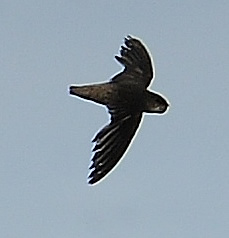
© 2011 Callyn Yorke © 2011 Callyn Yorke
Black Swift Cypseloides niger 1-2 flying fast from edge of forest with nearby waterfall, out over open areas with smaller GRSW for comparison.
Long-tailed Hermit Phaethornis superciliousus 2 coming regularly to feeders on Tucan trail in forest; relatively tame, LDL (photo).
© 2011 Callyn Yorke
Little Hermit Phaethornis longuemareus 1 briefly visiting feeders on Tucan trail; wary and shy, LDL.
White-necked Jacobin Florisuga mellivora 3 -5 regularly visiting Tucan trai feedersl; wary and quick, LDL (photo).
© 2011 Callyn Yorke
Green-breasted Mango Athracothorax prevostii 1 (m) in garden, fruiting trees, ML.
Black-crested Coquette Lophornis helenae 1 briefly visited Tucan trail feeders, LDL.
Crowned Woodnymph Thalurania columbica 2 regularly visiting Tucan trail feeders, LDL (photo).
© 2011 Callyn Yorke
Beryl-crowned Hummingbird Amazilia decora 1 garden trees, CE (photo)
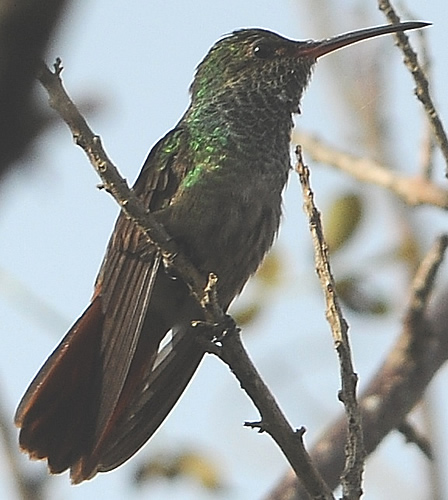
© 2011 Callyn Yorke
Amazilia sp. ? 1 (f imm ) visited Tucan trail feeder once, LDL (photo).
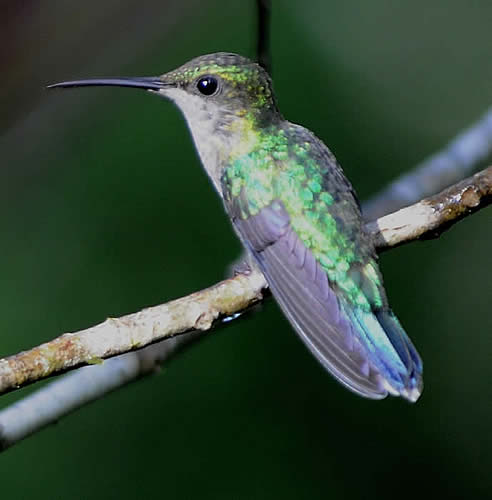
© 2011 Callyn Yorke
Rufous-tailed Hummingbird Amazilia tzacatl 1 garden CE; 4 garden flowering shrubs and Tucan trail feeders, LDL (photo).
© 2011 Callyn Yorke
Red-footed Plumeleteer Chalybura urochrysia 2 regularly visitng Tucan trail feeders, LDL (photo).

© 2011 Callyn Yorke
Magnificent Hummingbird Eugenes fulgens 5 active and vocal in clearings of cloud forest, VP (photo).
© 2011 Callyn Yorke
Long-billed Starthroat Heliomaster longirostris 1 perched on utility line in garden, CE (photo).
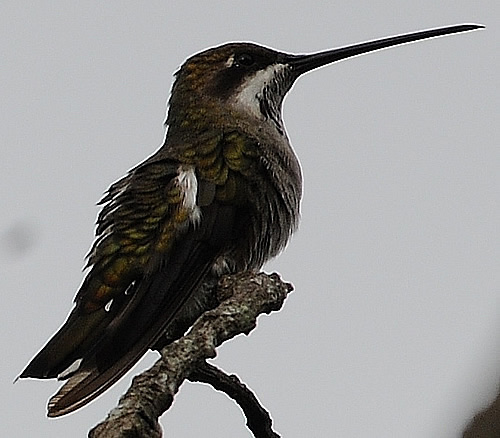
© 2011 Callyn Yorke
Turquoise-browed Momot Eumomota superciliosa 1 roadside restaurant withmature mango trees, RT (photo).
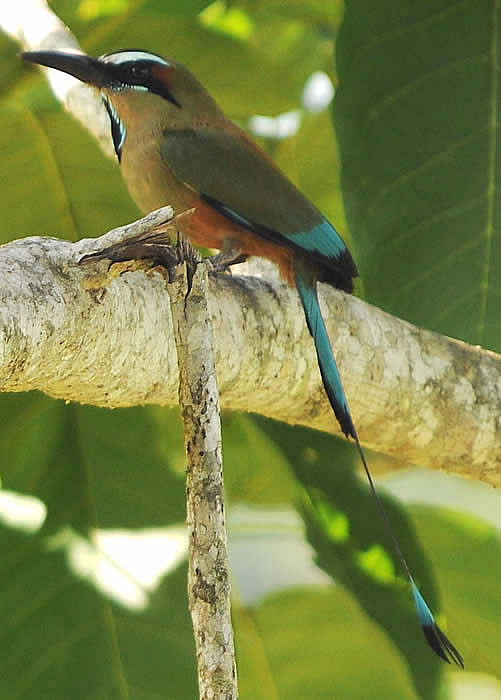
© 2011 Callyn Yorke
Blue-crowned Momot Motmotus momota 1 subcanopy of broad-leaved trees in garden, CE (photo)
© 2011 Callyn Yorke
Ringed Kingfisher Ceryl torquata 1 lagoon, LDL; lagoon, ML.
Amazon Kingfisher Chloroceryle amazona 1 lagoon, ML.
Green Kingfisher Chloroceryle americana 1 shady branches at the edge of the river by the boat launch, RT (photo).
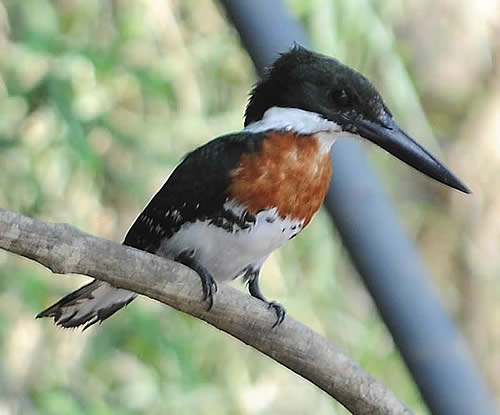
© 2011 Callyn Yorke
Pied Puffbird Bucco tectus 1 in outer canopy of emergent tree, Tucan trail, LDL.
Collared Aracari Pteroglossus torquatus 8 regular at banana feeder, LDL (photo).
© 2011 Callyn Yorke
Keel-billed Toucan Ramphastos sulfuratus 2 flying, calls, forest and clearings; not seen at the feeder, LDL.
Chestnut-mandibled Toucan Ramphastos swainsonii 2 flying, calls, forest and clearings; not seen at the feeder, LDL.
Black-cheeked Woodpecker Melanerpes pucherani 6 vocal active; regular at banana feeder; excavating nest cavity in dead tree a few feet below a pair of Masked Tityras outside our room (#21) LDL (photo).
© 2011 Callyn Yorke
Lineated Woodpecker Dryocopus lineatus 1 (f) foraging on 5" diameter branches in fruit tree, CE.
Pale-billed Woodpecker Campephilus guatemalensis 1 (m) foraging on trunk of leafless tree near the feeder; pursued by BCWO, LDL (photo).
© 2011 Callyn Yorke
Streak-headed Woodcreeper Lepidocolaptes souleyetii 2 active, vocal in tall deciduous trees, working trunk and main branches, LDL (photo).
© 2011 Callyn Yorke
White-flanked Antwren Myrmotherula fulviventris 3 active in undergrowth alongside Tucan trail, LDL.
Yellow-bellied Elaenia Elaenia flavogaster 1 mid and lower levels of trees in garden, LDL.
Dusky-capped Flycatcher Myiarchus tuberculifer 1 mid-level branches in garden, LDL (photo).
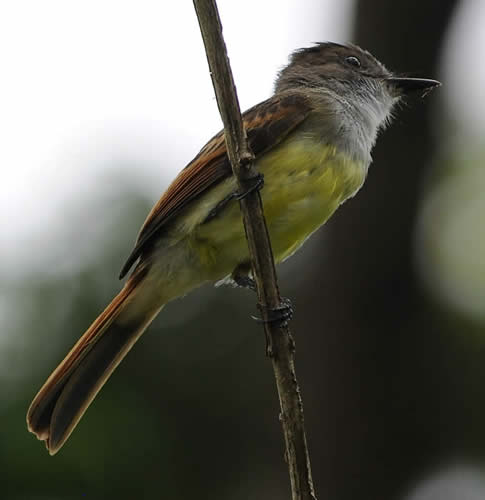
© 2011 Callyn Yorke
Great Kiskadee Flycatcher Pitangus sulphuratus vocal, conspicuous and regionally widespread in small numbers; occasionally at banana feeder(photo, LDL)
© 2011 Callyn Yorke
Boat-billed Flycatcher Megarynchus pitangua 1 coastal trees and shrubs; vocal, active, PL.
Social Flycatcher Myiozetetes similis 2 garden shrubs and trees; occasionally at feeder, LDL (photo).
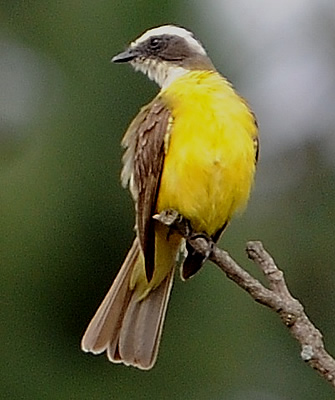
© 2011 Callyn Yorke
Torrent Tyrranulet Serpophaga cinerea 1 on boulders in stream, LW (photo)
© 2011 Callyn Yorke
Tropical Kingbird Tyrannus melancholicus 1 garden trees, CE; 2 pastureland and roadside trees, BC.
Masked Tityra Tityra semifasciata 1 tall trees in garden, CE; 2 nesting in dead tree above BCWO outside our room (#21) LDL (photo).
© 2011 Callyn Yorke
White-collared Manakin Manacus candei 4 active and vocal as we approached the boat dock, second lagoon, LDL.
Red-capped Manakin Pipra mentalis 2 vocal, active, mid-level branches, commonly at the forest edge and once in garden outside our room (#21), LDL.
Gray-breasted Martin Progne chalybea 3 - 4 flying over clearing next to forest, CE.
Mangrove Swallow Tachycineta albilinea 5 flying over river; perched on snags, RT; 1 on snag in second lagoon, LDL (photo).
© 2011 Callyn Yorke
Blue and White Swallow Notiochelidon cyanoleuca 20 flying low over lawns and garden; sunning on tile roofs, CE.
Brown Jay Cyanocorax morio 2 feeding in banana trees; calls, CE.
Southern House Wren Troglodytes aedon australis 2 vocal and active in garden, LDL.
Ochraceous Wren Troglodytes ochraceous 1 active, vocal in trees above garden, CE (photo)
© 2011 Callyn Yorke
Rufous-naped Wren Campylorynchus rufinucha 2 nesting in tall pine, CE (photo).
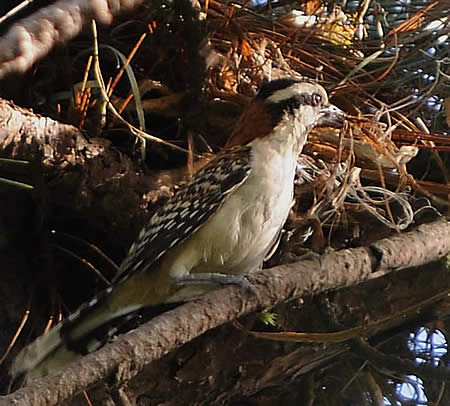
© 2011 Callyn Yorke
White-breasted Woodwren Henicorhina leucosticta 3 vocal, active in disturbed vegetation next to fresh logging track, LDL.
Tropical Gnatcatcher Polioptila plumbea 1 vocal, active in mid to upper levels of trees in garden, LDL (photo).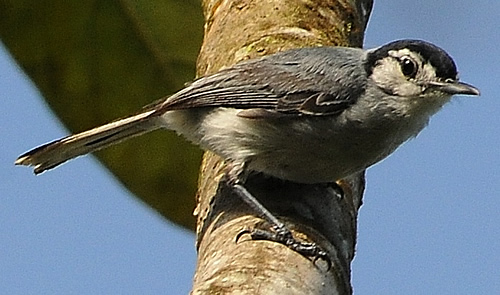
© 2011 Callyn Yorke
Clay-colored Robin Turdus grayi ubiquitous in lowland and middle elevations; young in nest, LW; LDL
Black-billed Nightingale Thrush Catharus gracilirostris 2 vocal, active on or near ground on forest trails, VP (photo).

© 2011 Callyn Yorke
Yellow-green Vireo Vireo flavoviridis 2 active, vocal in trees around garden, CE.
Bananaquit Coereba flaveola 1 vocal, visiting flowering shrub in garden, LDL (photo).
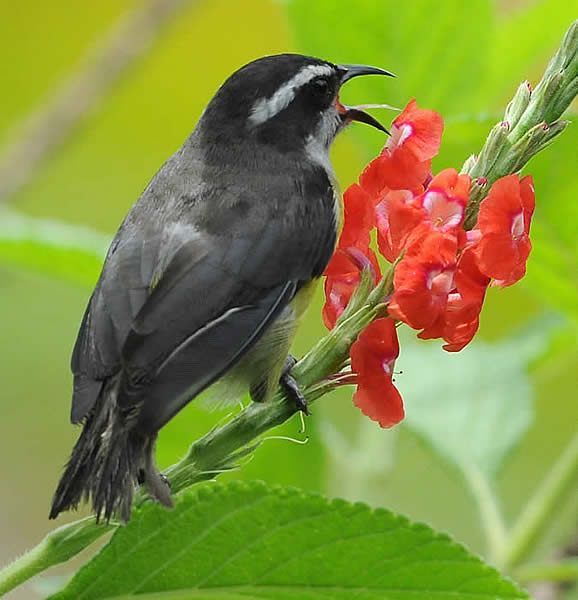
© 2011 Callyn Yorke
Golden-hooded Tanager Tangara larvata 6 individuals visiting feeder fairly regularly; vocal and acitve in forest canopy, LDL (photo).
© 2011 Callyn Yorke
Blue Dacnis Dacnis cayana 1 (f) visiting flowering shrub in garden, LDL (photo).

© 2011 Callyn Yorke
Green Honeycreeper Chlorophanes spiza 2 a fairly frequent visitor to banana feeder, LDL (photo).
© 2011 Callyn Yorke
Red-legged Honeycreeper Cyanerpes cyaneus 2 occasional visitor to banana feeder, LDL (photo)
© 2011 Callyn Yorke
Sooty-capped Bush Tanager Chlorospingus pileatus 2 active in clearings, mid-level in cloud forest, VP (photo).
© 2011 Callyn Yorke
Olive-backed Euphonia Euphonia gouldi 2 canopy of trees in garden, LDL.
Blue-gray Tanager Thraupis episcopus ubiquitous; 4 vocal, active in canopy and subcanopy; frequent visitor at the banana feeder, LDL.
Palm Tanager Thraupis palmarum ubiquitous; 4 vocal, active in the canopy; frequent visitor at the banana feeder, LDL.
Scarlet-rumped Tanager Ramphocelus passerinii 4 frequent visitor to banana feeder; m agressive toward f, LDL (photo).
© 2011 Callyn Yorke
Grayish Saltator Saltator coerulescens 2 vocal and active in trees around garden, CE (photo)
© 2011 Callyn Yorke
Large-footed Finch Pezopetes capitalis 3 (ad, imm) adults feeding fledgling on forest floor, VP (photo).
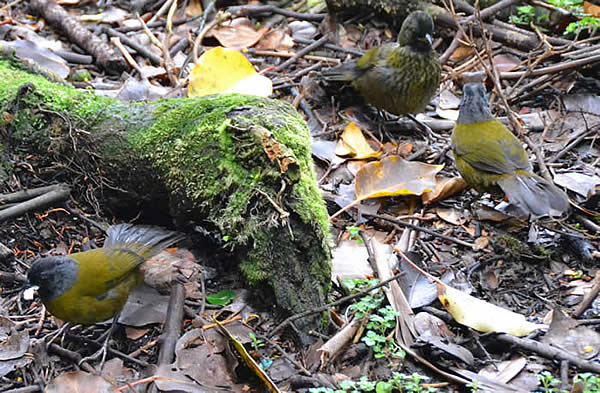
© 2011 Merissa Mendez
Black-faced Grosbeak Caryothraustes poliogaster 1 (f) active in second-growth along Tucan trail, LDL.
Blue-black Grassquit Volatinia jacarina 4 active in weedy fields bordering pastures, BC.
Variable Seedeater Sporophila aurita 1 in garden, LDL.
Rufous-collared Sparrow Zonotrichia capensis 3 on lawns and in garden, CE; 2 clearing next to volcano overlook, VP.
Thick-billed Seedfinch Oryzoborus funereus 4 common, active in garden, LDL (photo)
© 2011 Callyn Yorke
Great-tailed Grackle Quiscalus mexicanus ubiquitous in southern and central lowlands in and around towns and villages.
Nicaraguan Grackle Quiscalus nicaraguensis 2 farmland and pastureland, BC (photo).
© 2011 Callyn Yorke
Bronzed Cowbird Molothrus aeneus 3 active on lawns and in trees; m displays, CE (photo).
© 2011 Callyn Yorke
Scarlet-rumped Cacique Cacicus uropygialis 1 visited feeder early one morning , LDL (DC).
Chestnut-headed Oropendola Psarocolius wagleri 1 visited garden trees briefly early one morning, LDL (DC). A new LDL record.
Montezuma Oropendola Psarocolius montezuma 2 flying over, CE; 6 frequent visitor to banana feeder, LDL (photo).
© 2011 Callyn Yorke
Red-winged Blackbird Agelaius phonecius 2 lagoon and wetlands, BC.
House Sparrow Passer domesticus conmon in and around San Jose.
Northeastern COSTA RICA (April 1-10, 2011) © 2011 Callyn Yorke
Photos of Laguna Del Lagarto and adjacent areas

© 2011 Callyn Yorke © 2011 Merissa Mendez
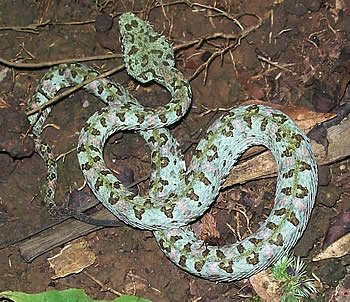
© 2011 Callyn Yorke
Our visit to Costa Rica began at the San Jose international airport (SJO) where we were met by Randall, a friendly and knowledgeable Costa Rican driver sporting a 4WD Mitsubishi. Randall was employed by Extreme Adventures of Costa Rica and contracted by Laguna Del Lagarto (LDL) for our transportation. Like many Costa Ricans, he was well-educated and fluent in English. Randall informed us that mid-April was near the end of the dry season; this region receives 2 - 5.5 meters (78 - 225 inches) of rainfall annually. The Antelope Valley, California, by contrast, averages about 10 inches of rain annually. Laguna Del Lagarto, our final destination in northeastern Costa Rica, receives an average of about 4 meters of rainfall annually, most of which falls between May and January. Even at the height of the dry season at LDL, prevailing winds from the northeast bring heavy rainfall nearly every evening. Our umbrellas would come in handy.
We proceeded on a zig-zag route northward 140 km to Laguna Del Lagarto (see map) on narrow mountain roads (reaching a maximum elevation of about 1600 m), passing through the scenic towns of Naranjo, Zarcero, and Quesada.The latter town I mistakenly referred to as "Quesadilla." Randall was mildly amused. We stopped at a cafe for lunch in Pital, the nearest large town to LDL (the driving time between Pital and LDL is about 1.25 hr.), located on the north side of the lower slopes of the Cordillera Central (the old route to LDL was partially destroyed on January 8, 2009 by a devastating earthquake (mag. 6.1) centered near Volcan Poas). From Pital, our journey was on an unpaved secondary road, passing through farm land and villages in a bucolic setting amongst rolling hills of the San Carlos River region. Then, easily missed altogether if one had momentarily dozed off, the last major town along the route (a cluster of small homes, an elementary school, a general store, a bar, a hand-made furniture factory, and a cell phone tower), Boca Tapada. Earlier, about 2 km south of Boca Tapada, we made a couple of roadside stops to observe birds such as, Ruddy Ground Dove (Columbina talpacoti), Common Ground Dove (Columbina passerina), Groove-billed Ani (Crotophaga sulcirostris), Tropical Kingbird (Tyrannus melanocholicus), Common Tody Flycatcher (Todirostrum cinereum), and Scarlet-rumped Tanager (Ramphocelus passerinii) in shrub-covered fence lines, adjacent cattle pastures and ploughed taro fields. Most unexpectedly, a pair of Yellow-crowned Parrots (Amazona ochrocephala) was seen quite clearly flying over pastureland. This bird is a South American and southern Panamanian species which is apparently unrecorded in Costa Rica (Stiles & Skutch, 1989).
A few minutes later, dodging numerous potholes, we reached the village of Santa Rita, within view of the impressive gallery forests of LDL. The journey by car from the SJO airport to LDL had taken us about 5 hours and went without incident (our largely non-stop, return trip from LDL to the SJO airport was completed in 3 hrs.and 17 minutes). We spent 10 days and 9 nights at the lodge in attractive, clean accomodations. The very reasonable rates included all meals (simple, tasty dishes with fresh fruit and veggies, beef, pork and chicken), canoeing, access to trails and photography hides, and expert guides.
This was Merissa's first trip to Costa Rica, my third (June, 1997 and January, 1999). My previous visits had included two extended stays at LDL, the most recent one with my Tropical Biology class from AVC. In addition to scouting the area for another AVC Tropical Biology class, I planned to make comparative surveys of birds to see if any significant changes had occurred over the past decade. Luckily, a young ornithologist working at LDL, Didier Castro, made himself available for bird surveys. With his help we identified about 103 species of bird in and around LDL, representing about one-third of the bird species documented to occur there.
During the past decade, LDL has been upgraded and expanded to comfortably accomodate around 40 lodge guests and features a new biology laboratory for visiting college and university classes. In addition, a young Hungarian wildlife photographer, Bence Máté, winner ot the 2010 British Museum of Natural History international competition for best wildlife photographer, had built three high-quality photography hides at LDL, providing excellent opportunities for visiting naturalists and wildlife photographers. We were delighted to learn upon arrival that Bence Máté's winning photo of nocturnal leaf-cutter ants was made only steps away from the room we would be staying in at LDL. His webpage may be found at: http://www.hidephotography.com or http://www.matebence.hu
. Together with a mapped and well-maintained trail system (including freshwater lagoons, grassland-savanna, primary and secondary rainforest), LDL , covering an area of about 500 hectares (1,235 acres), holds almost limitless potential for conducting biological field work (see Student Projects). LDL promotes sustainable resource use, eco-tourism and supports student-volunteer work at the lodge. Recently developed programs have aimed at assisting villagers in the fields of nursing, applied agriculture and language skills. Further information about LDL can be found at: http://www.lagarto-lodge-costa-rica.com/rainforest_lodge/index.htm
Our surveys included several brief visits to the local village and lagoon of Santa Rita, located about 2 Km south of LDL. Among other rarities, we were specifically looking for Boat-billed Heron (Cochlearius cochlearius) , which we found to be represented by three nests, two with chicks. Nearby, at the home of LDL manager Adolpho Gonzalez, we were treated to close-up views of many bird species, including, Blue Dacnis (Dacnis cayana) , Shining Honeycreeper(Cyanerpes lucidus) , Red-legged Honeycreeper (Cyanerpes cyaneus) and Buff-throated Saltator(Saltator maximus ) , all visiting garden feeders baited with fresh bananas. We also spent one morning surveying the swift-flowing San Carlos river by boat, between Boca Tapada and Boca San Carlos (see map). Several more bird species were added to our list, including Green Ibis (Mesembrinibis cayennensis), Green Kingfisher (Chloroceryle americana), Ringed Kingfisher (Ceryle torquata) and Mangrove Swallow (Tachyicineta albilinea). Along the muddy, snag-ridden river edges, our sightings included, American Crocodile (Crocodylus acutus), Tropical Slider (Chrysemys ornata) and two sleepy squadrons of Long-nosed Bat (Rhynconycteris naso) clinging to emergent branches.
